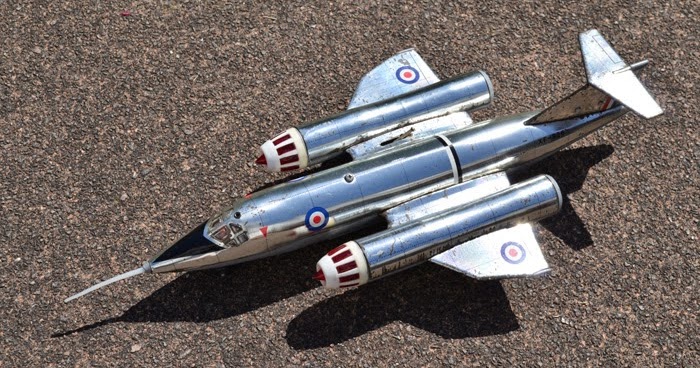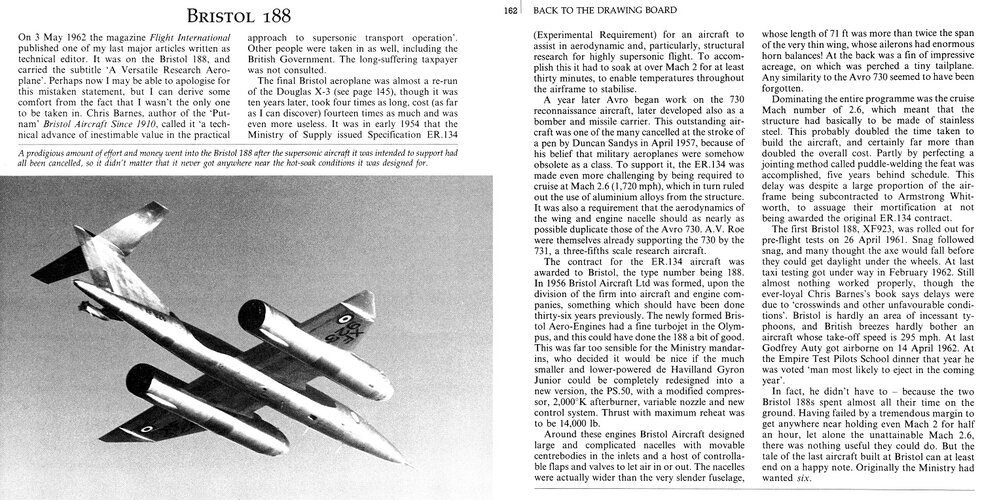The way in which MoS disseminated Research findings was through joint Committees, Scientific Civil Service+industry. 2 were the Gas Turbine Collaboration Committee and the Swept Wings Advisory Committee. In 1953 RAE/Aerodynamics+NGTE had judged that the optimal layout for high supersonic cruise was Meteor-esque straight wing+stainless steel+reheated Big Axial.
In 1953 we did not simulate much; we could not deal purely on paper with high altitude (RR/Sinfin Altitude Test Facility opened in 1958). So we built Proof Vehicles and Flying Test Beds, optimised for the Research Task. So, M52 was a bullet to go fast in a straight line with no payload. Militarily useless.
MoS/RAE's sponsor of high supersonics was (to be) Sir Morien Morgan (to be DD/RAE, Chief Scientific Advisor/Air Ministry, D/RAE). In 1953 he extracted MoS funds for a >M2.2 proof vehicle. Big Guys tended to take little interest in exotic one-offs: they had better things to do, and anyway would access the results of flight test. The Contractor for the Experimental type had no advantage to Bid for any later Application, which is why these jobs went to people like MIles (M52), Boulton Paul (BP.111 delta), Hunting (Jet Flap).
MoS put out an Invitation to Tender for 2xflight, 1x(Iron Maiden) specimen, RA.24R. AWA and Bristol could not be ranked; AWA's Design credibility had long since been tarnished, their Prodn long since been esteemed, so MoS made Bristol Main Contractor, AWA fabrication lead (in part as business cousin of High Duty Alloys, so at least aware of the art of metallurgy). Cost-plus contract, 4/1/54 (all these Research jobs were cost-plus, as, by definition, no-one had a cost clue).
Air Ministry decided Medium Bombers must fly higher, faster, so Required such a thing. Avro 730 (T.188-esque) won, 1/11/55, ASM 3/56 winning its reheated Big Axial P.176. Ahead of that 3 more T.188s were added, 9/55* as military proof vehicles, with P.176 (I do not know if the first 2 were to have P.176 as well). These, P.176, and Avro 730 were all chopped 4/4/57. M.Morgan, by then Chairman, Supersonic Transport Aircraft Committee, persuaded Ministers to continue with the 2+1 on MoS' Aircraft Research budget, to give him a vehicle for High Fast Research. (Maybe because RR were then in the ordure trying to make reheat work on P.1B's Avon) MoS judged DH, having lost Big Wet Gyron, could readily, cheaply, put reheat on N.A.39's Gy.Jr, so inserted that, 7/57.
So: to Gunston's Why, 7/57, not Big Olympus? Because B.Ol 100/Vulcan B.1 as B.Ol 200 had just beaten Conway for Vulcan B.2, so Bristol had better things to do.
(* amended 19/04/23: Air-Britain #25 below says 11/5/55)


